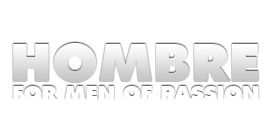5 Things To Consider Before Buying Your Next Running Shoes
27 Jun 2020 by Lina Jordan in Ego, Excercise, Fitness, Fitness, General, Health, Health, Home, Pleasure

As much as you may think all running shoes are the same and the ‘features’ are all just marketing speak, the truth is that finding a shoe that works best for you is absolutely essential for maximum performance and safety. But with all of the options on the market (and we’re not just talking
about colors), how do you narrow down the choice and find your perfect shoe?
Located in the heart of New York City, Perfect Stride is one of the leading physical therapy clinics, renowned for their research driven and personalized services. Here are 5 things to consider when buying your ultimate running accessory.
1. Wide Toe Box – fashion over function has become the motto of many shoe companies over the years. As a result, the toe box on shoes has been getting narrower, altering the anatomy of the foot and decreasing its functionality. Not to mention having a narrow toe box also contributes to a whole host of conditions at the foot such as: bunions, neuromas, metatarsalgia and others. When selecting a running shoe, you want to make sure that the toes are able to sit in the shoe without being crowded (see point 5 for a way to test if this is the case or not).
2. Heel to Toe Drop – this refers to the difference between the height that the heel sits off the ground compared to the toes. Having a zero-drop shoe (heel height = toe height) will allow for your foot to function more like a foot should and reduce forces through your joints by promoting a foot strike closer to your body. In an ideal world, everyone would wear a zero-drop shoe but do not run off and buy one if this is not what you typically wear. Understanding your anatomy and movement capabilities while also having a plan to transition into a zero drop (or decreased heel to toe drop) shoe is imperative to avoid injury and maximize performance.
3. Stack Height (sole thickness) – your foot is one of the most highly sensory innervated regions of the body!
However, if you have a thick cushion between the ground and your foot, you are greatly reducing the ability of your foot to understand and respond to its environment. Just think if you had to wear oven mitts on your hands for most of the day, this is how our feet feel!
4. First feel – this refers to the sensation that we get when we first slip on a pair of shoes. Do we like them, are they comfortable, can we see ourselves having success in them? If you have a positive association when first trying on your shoes, it has been shown that you will perform better in them.
5. Does the shoe (already) fit? – one of the easiest ways to determine this is by taking out the factory insert of the shoe, placing it on the ground and standing on it. If your foot is able to sit on top of the insole without spilling over the edges of the insole, you have a shoe that fits. Remember that you should never think that a running shoe can be worn in to fit your foot, it should fit well on day one.









